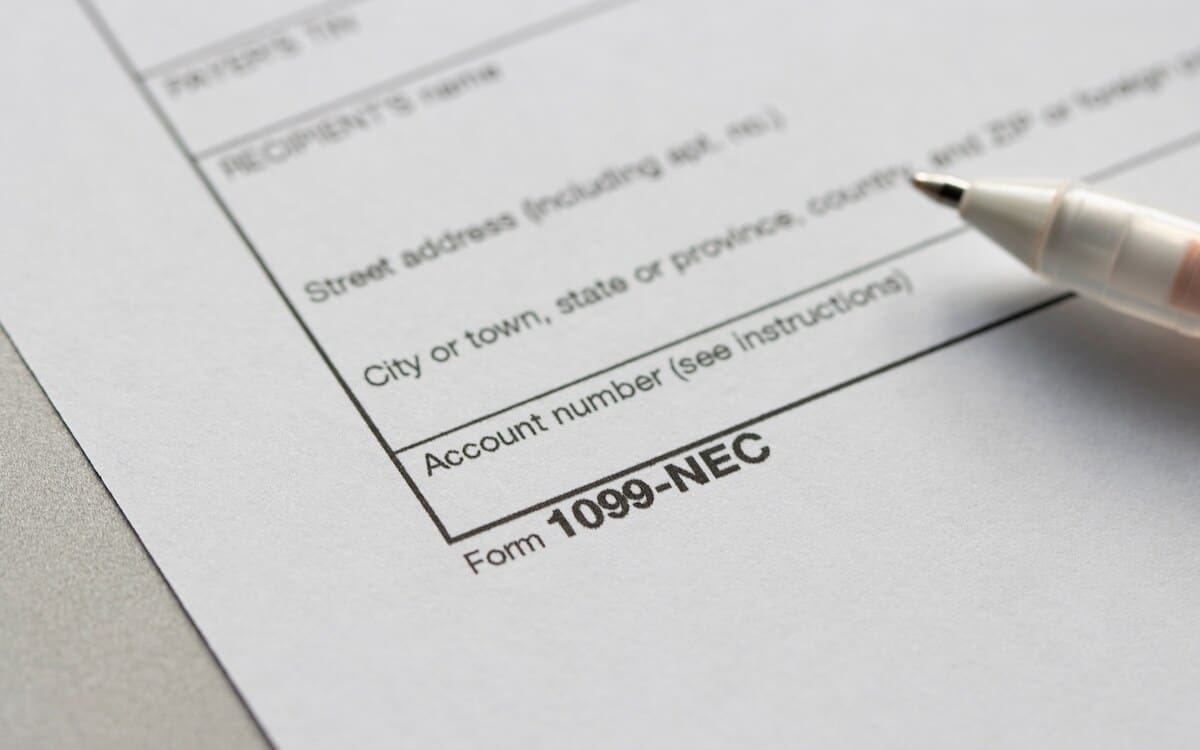The 1099-K form is an important tax document for small business owners and freelancers. It’s also seen several changes to its reporting threshold in recent years. This guide explores what you should know about it to stay tax compliant and avoid costly penalties. We’ll discuss the role it plays in your taxes, common filing mistakes to avoid, and the rules for 2025 and future tax years as of the latest regulatory update.
What is a 1099-K?
The 1099-K is a tax form that reports payments you received from card payment processing companies or third-party settlement organizations for goods or services you delivered during the year. Card payment processors include all companies that process credit, debit and gift card payments. Third-party settlement organizations (TPSOs) include payment networks like PayPal, payment apps like Venmo and online marketplaces like Etsy.
1099-K forms report aggregate payment transactions. For instance, if dozens of clients send you Venmo payments, Venmo will issue you a 1099-K form for the total amount. TPSOs and card payment processors issue 1099-K forms to you, to your state and to the IRS. The goal is to make sure everyone properly reports business income on their tax returns. Freelancers, contractors, online sellers and small business owners often receive 1099-K forms from multiple issuers and platforms.
October 2025 IRS Update: Be Aware of the New 1099-K Reporting Threshold
Form 1099-K was created in 2008 through the Housing Assistance Tax Act (HATA). HATA required issuers to send forms to taxpayers who received more than $20,000 and 200 payments in a single tax year.
In March 2021, the American Rescue Plan Act (ARPA) lowered the requirements to $600 and no minimum payments. However, the IRS delayed implementation repeatedly to give stakeholders time to adjust. After several extensions—including a period where the threshold was temporarily set to $5,000—the $600 threshold was expected to take effect in 2026.
But when the One Big Beautiful Bill Act (OBBBA) passed in July 2025, it reversed the ARPA’s change to the reporting threshold. As a result, the $20,000 and 200 payment threshold will apply in 2025, future tax years, and retroactively to 2022.
Who Qualifies to Get a 1099-K?
If you sell goods or services and take payment by credit card, debit card, gift card or TPSO, you will receive a 1099-K for the 2025 tax year if you received at least $20,000 and more than 200 payments.
Freelancers, gig workers, online sellers and business owners must use the information on 1099-K forms to report business income on their tax returns. For example, if you sell clothing through an online auction site such as eBay, and your sales add up to $10,000 in 2025, you will not receive a 1099-K from eBay. If you are a freelance bookkeeper who takes payment through PayPal, you will receive a 1099-K from PayPal if your total 2025 activity exceeds the 1099-K form limits of $20,000 and 200 payments.
Only payments for the sale of goods and/or services should count toward these thresholds. If payments from family or friends are included on your 1099-K, report the mistake to the issuer and have the form updated.
5 Steps to Stay Compliant
- Track all payments: Make sure every payment, whether from debit/credit card or third-party platforms, is tracked. You should always know how much you have earned for your goods and services.
- Verify income: Cross-check your 1099-K forms with your own records to be sure all your business income is accounted for. If you are a freelance worker on several different professional services marketplaces, you could receive 1099-K forms from each one, provided your 2025 activity on that site or platform exceeds $20,000 and 200 payments.
- Report all business income: Even if you don’t receive a 1099-K, you’re still required to report all business income, whether or not it’s over the 1099-K threshold for 2025. For instance, if you’re a freelancer who earned $2,500 from three different online sites, you must report all that income, despite not receiving a 1099-K form.
- Consult a tax professional: If your records do not match the 1099-Ks you receive, seek professional tax advice to ensure you stay compliant.
- Keep digital records: Digital records make your income reconciliation process easier and faster.
How to Prevent Common Filing Mistakes
Since the 1099-K form limit has been updated several times recently, it’s easy to misunderstand what needs to be reported and why. Here are some of the common errors you might make when reporting your income, and how to avoid them.
Not reporting business income
Even if you do not get a 1099-K, you must report all business income.
Reporting personal income
Only business income counts. Personal payments do not apply. If a friend sends you a Venmo reimbursement for a meal or rideshare, you do not have to report it as business income.
Double reporting business income
You might also receive 1099-NEC forms from clients for payments they made to you. If your small business sells $8,000 worth of services to a client, you might receive a 1099-NEC form from them for that amount. If the client paid by TPSO or credit card, you will also get a 1099-K form from the payment processor. Only report that $8,000 once.
Confusing gross and net income
Not all business income is taxable. Be sure to account for refunds, discounts and some business expenses that can be deducted to avoid overreporting.
Not recognizing that the threshold has changed
The 1099-K form limit has jumped from $5,000 to $20,000 and 200 payments for 2025. The planned reduction to $600 was reversed.
Not getting help
The IRS has resources in place to help you understand what a 1099-K form is and what to do with them. Freelancers, online sellers and small business owners can also get answers to their tax questions from a trusted tax professional.
How to Fix Errors on Your 1099-K
Occasionally, a 1099-K form might contain an error. Common mistakes on a 1099-K form include:
- The form uses your personal name, rather than the name of your business
- Your business tax ID is incorrect (TIN or EIN)
- The merchant category code is not accurate for your business
- Your transaction data is mixed with that of another entity (this might occur if you share a credit card terminal with another business)
- Your data was reported to the wrong entity
- You received a 1099-K when you should not have
If you notice an error on your 1099-K, contact the issuer to correct it right away. Keep any forms you were sent for your own records.
- The name and contact information of the issuer is under “Filer” in the top left corner of the 1099-K form
- Ask for a corrected 1099-K form with the accurate name/merchant code
- If you should not have received a 1099-K form from that issuer, ask for a corrected form with a zero amount
- If your data was mixed with another business entity, ask for the amount that reconciles with your own records
If you do not receive the corrected forms in time, complete and file your taxes anyway. If your name or merchant code is incorrect, file your taxes as normal, using the appropriate forms and schedules.
The IRS cannot correct a 1099-K form. If the amount is incorrect, report the incorrect amount and note the error. If, for instance, you receive a 1099-K for from Venmo which includes $5,000 sent from family as birthday gifts, you would do the following on Schedule 1, form 1040:
- Enter the error on Part 1, line 8z, ‘Other Income’: “Form 1099-K received in error, $5,000”
- Adjust the amount on Part 2, line 24z, ‘Other Adjustments’: “Form 1099-K received in error, $5,000”
Why You Can’t Afford to Ignore Your 1099-K
Failing to report your 1099-K income can lead to steep penalties. The IRS also receives copies of 1099-K forms and cross-checks them with your reported income. Discrepancies can trigger an audit. In addition to facing interest charges on unpaid taxes, you could receive penalties of up to 20% of your unreported business income, so it’s absolutely necessary to file correctly and on time.
Stay Ahead of Rule Changes with Expert Tax Help
Since the 1099-K reporting limit has changed, and will continue to in coming years, workers and businesses who accept third-party and credit card payments will receive 1099-K forms from more sources than before. The new and changing rules can create confusion about what income you have to report, and how. Paro gives you access to a network of skilled tax professionals ready to provide personalized tax advisory and filing services to guide you through tax season.






